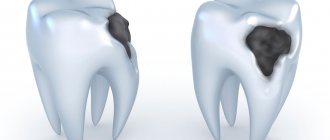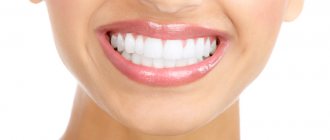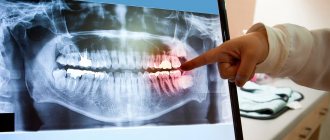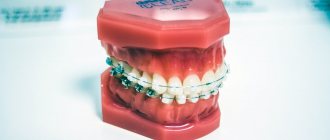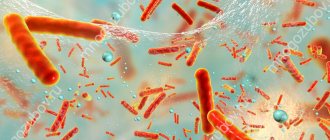From this article you will learn:
- features of the development of childhood caries,
- reasons for appearance, photos,
- how caries is treated in children under 3 years of age and after.
Bottle caries is one of the terms used in dentistry to refer to carious lesions in primary teeth (in young children). This term seems to emphasize the importance of poor nutrition in the development of dental caries in a child. And the main factors here are: firstly, the consumption of large amounts of sugar-containing foods and drinks, and secondly, a violation of the diet (for example, feeding on demand).
The most adverse effect on the development of bottle caries in children is caused by frequent night feedings of sweet and sour foods. This can be sweet porridge, sweet tea, juice, dairy products, etc. The fact is that at night salivation is very reduced, and therefore the possibility of self-cleaning of teeth is reduced (due to washing off with saliva and swallowing food particles), and also the remineralization of dental tissue is reduced. enamel with calcium contained in saliva.
Bottle caries: photo
Caries of baby teeth in children can occur not only after their eruption has finished, but also when the crown of the baby tooth is only partially visible above the mucous membrane. The upper incisors and first molars are usually affected first, often all the teeth as they erupt. In young children, the development of caries is aggressive in nature, which is associated with weak mineralization of the enamel of primary teeth (its saturation with calcium, phosphates, fluoride). If we add to this poor nutrition and irregular care of the baby’s oral cavity on the part of the parents, we get a “circular form of caries” (Fig. 1.9).
Childhood caries in children under 3 years of age is usually asymptomatic. This is due not only to the characteristics of the nervous system of children, but also to the immaturity of the nerve endings in the pulp of temporary teeth. When caries occurs, children usually do not show any concern, and only a few of them refuse to eat sour fruits and vegetables and solid foods. All this leads to parents bringing their child to the dentist too late. But there is one more feature...
Important: children under 3 years of age have a very small thickness of hard tooth tissue, and therefore the appearance of even a shallow carious cavity immediately leads to the development of pulpitis (inflammation of the nerve in the tooth). At first, pulpitis can be asymptomatic, or with the appearance of paroxysmal pain in response to taking hot or cold. Pulpitis quickly turns into periodontitis, which leads to the formation of a purulent abscess in the area of the roots of a baby tooth, which can be manifested by swelling of the gums and the formation of a fistula.
Interesting point -
Often, a dark pigment plaque forms on a child’s teeth in the form of black spots, which can be mistaken for caries. The integrity of the enamel is not compromised, and such pigmentation is a deposition of iron salts on the surface of the enamel - due to the activity of anaerobic bacteria (actinomycetes). This type of staining is called chromogenic (Fig. 4).
This dark plaque is formed as a result of the interaction of hydrogen sulfite (a waste product of actinomycetes) with iron contained in saliva or with iron in red blood cells that can enter the oral cavity, for example, when gums bleed due to inflammation.
Bad teeth in a child: reasons
A child’s baby teeth rot for various reasons.
Some are impossible to influence, others can be easily eliminated by dentists and caring adults. Most often, destruction of the enamel, and subsequently the coronal part of the primary occlusion units, is facilitated by:
- Disorders of intrauterine development of a child. Developmental pathologies are formed due to maternal toxicosis, non-compliance with nutritional recommendations, and the use of potent medications.
- Early birth of the baby. Prematurity of a baby indicates incomplete formation of internal systems - in particular, weak thin enamel of baby teeth.
- Antibacterial therapy administered to a child in the first year of life.
- Poor hygiene. Lack of systematic cleaning after the first tooth erupts, improper care, and inadequate parental control.
- Unbalanced child nutrition. Predominance of flour and sweets in the menu, lack of fermented milk and dairy products, hard fruits and vegetables.
- Reduced immunity. Congenital or due to a lack of vitamins in the diet.
- Diseases of the gastrointestinal tract, dysbacteriosis.
- Diseases of the endocrine system - diabetes mellitus.
- Previous infections - ARVI, chicken pox, scarlet fever.
- Pathogenic microflora entering the baby’s mouth from the outside. If family members have the habit of licking the baby’s spoon or pacifier, or kissing the baby on the lips.
- Poor ecology is a significant external factor that negatively affects the condition of the child’s teeth and general well-being.
- Heredity - parents or grandparents have bad teeth.
- Mechanical injuries, external damage to tooth enamel - cracks, small chips.
Professional treatments
To stop tooth decay, experts recommend strengthening the enamel with the help of remineralizing agents:
- fluoridation – periodic coating with solutions containing fluorine and other useful microelements;
- artificial saturation of the enamel surface with calcium and other minerals - the dentinal tubules are sealed and the density of the enamel increases;
- ozonation – destruction of bacteria in the affected tooth tissues without injuring soft tissues, helps stop destruction and cure caries at the initial stage;
- filling of dental defects;
- prosthetics – a decaying tooth is covered with a crown to isolate it from aggressive environments and stop crumbling.
- fissure sealing – sealing the chewing surface of molars with a special filling material;
The dentist chooses the appropriate treatment method, depending on the condition of the teeth and the age of the patient.
If your teeth have already begun to decay/crumple or the first signs of caries have appeared (stains on the enamel, changes in its color), do not delay your visit to the dentist. This is when time matters!
How to determine if a child has bad baby teeth
A child's rotten front teeth are immediately visible. These are dark or yellow spots of enamel, reddened gums, and damaged edges. But sometimes decay begins on the distant teeth - molars, premolars, and then you need to focus on indirect signs.
The fact that a child is growing bad teeth is indicated by:
- complaints of pain and discomfort - reaction to toothpaste, hot or cold foods;
- unpleasant odor from the baby’s mouth - putrid, pungent;
- change in enamel color - the appearance of dark stripes, yellow or dark spots;
- development of dental diseases - caries, pulpitis.
Any of the listed factors indicates the need for consultation with a pediatric dentist - a full diagnosis and timely treatment.
What are the dangers of putrefactive processes if they are not treated?
When it comes to treating a small child, it should be understood that destruction very quickly spreads to the internal structures of the tooth. In addition, the processes of decay contribute to the development of inflammatory processes in the surrounding tissues, the appearance of suppuration. If you ignore the problem and miss the precious moment when teeth can still be saved, it is likely that you will have to face very serious complications, including an abscess, severe intoxication of the body and damage to vital organs.
“My daughter has had very bad teeth since birth, just like me. Apparently it was passed on genetically. Almost from the very appearance of the first incisors, we have been constantly struggling with caries. At the same time, I personally make sure that she brushes her teeth twice a day, I don’t give her sweets, but, as they say, you can’t smear genes with your finger. And recently we discovered rot! The doctor immediately took an X-ray - fortunately, they managed to notice it in time, and the destruction did not reach the inner layers. After this, the doctor cleaned us, prescribed special gels and rinses, and put in a temporary filling. A course of antibiotics was prescribed. I’m very worried that there won’t be a relapse.”
Angelina, Saratov, from correspondence on the 24satoma.ru forum
Black teeth look rather unaesthetic and can lead to complexes in a child.
In addition to everything said above, rotten black teeth look extremely unaesthetic, and often become the main reason for the development of serious psychological complexes in a child. The visual picture is unpleasant both for the patient himself and for those around him. In order not to bring the disease to such an advanced stage, when the first suspicious spots appear on the child’s enamel, you should immediately show it to a pediatric dentist.
Stages of decay of children's milk teeth
A child’s bad teeth almost always mean caries. The disease is distinguished by the type and depth of tissue damage. Dentists highlight:
- Initial and superficial caries is the primary destruction of the enamel, manifested as white spots.
- Visible carious lesions are medium and deep caries. Teeth rot quickly and stains develop into cavities. The child begins to experience pain. An unpleasant odor appears from the mouth.
- Circular caries is the circular destruction of enamel and dentin near the gums. If left untreated, the tooth breaks and rots further to the root.
In particularly advanced situations, damage covers an increasingly larger volume of tissue, leading to serious pain and loss of the milk unit.
Clinical picture of caries
The first stage of the carious process
Caries occurs in the spot stage and in the superficial layers of enamel. Then we observe a stain on the surface of the tooth, which gradually becomes more dull, rough and porous.
The second stage of the carious process
If the enamel is chipped and a defect is formed, the tooth becomes more sensitive to irritants. Transient pain appears after eating cold, sweet and sour foods.
The third stage of the carious process
A carious cavity in dentin (tooth tissue located under the enamel). In this case, toothache appears depending on the situation, for example, when chewing on a diseased tooth or when there is a sudden change in the temperature of food, air, or when food gets into the cavity of a damaged tooth.
The fourth stage of the carious process
With further destruction, a deep carious cavity appears in the tooth, which gradually increases in size, so that eventually the tooth is destroyed and the pain appears spontaneous and constant. At this stage, an urgent visit to the dentist is necessary, as this indicates damage to the nerve of the tooth. In this case, it is not always possible to save the tooth.
Meet our tooth fairies and find out prices
Bad teeth in a child: how to treat
Decay of baby teeth can be stopped. Especially if the parents quickly assessed the threat and brought the child to the children's dental clinic. Treatment options are different:
Remineralization of tooth enamel
The doctor will apply a special gel to the baby teeth, which contains minerals to strengthen the teeth. Usually it is calcium, phosphorus, fluorine. The substances will restore the enamel structure at an early stage of destruction, but if the teeth are already rotting, the dentist will select a different treatment.
Sealing
Cleaning out carious cavities and then installing a filling. The preparation method is selected according to the patient’s age. Modern dental clinics treat teeth without a drill - using the ICON method, as well as using classical methods.
Ozonation of teeth
A method of disinfecting destroyed cavities followed by filling, when ozone is used to eliminate pathogenic microflora. The treatment has proven itself to work with children's rotten teeth, but is only suitable for moderate decay.
Laser therapy
The disinfectant effect of a laser beam is an excellent way to disinfect a small cavity and remove bacterial microorganisms in the mouth of a young patient. Suitable for the treatment of moderate caries of primary teeth.
Removal
A radical method of dealing with rotten teeth of a child. Used when it is impossible to carry out therapy and save teeth.
Rodikova Tatyana
When parents are interested in why their child has bad teeth, I first of all ask about nutrition. Almost all children today eat sweets, chips, and drink soda without restrictions. Of course, this negatively affects the teeth. The second common reason is heredity. Congenital diseases and medications are less likely to damage teeth.
Causes of caries
Caries occurs “thanks” to microorganisms living in the thickness of dental plaque. These bacteria - primarily streptococci, lactobacilli and actinomycetes - process food debris that remains on the teeth and produce acids that corrode the tooth enamel, leaching calcium from it. The tooth enamel begins to deteriorate.
The activity of bacteria varies from person to person: it is higher if a person brushes their teeth irregularly or not thoroughly enough, since soft interdental plaque is an excellent nutrient medium for them.
Why treat baby teeth?
Rotten baby teeth do not always attract the attention of parents. Especially if the pathological processes are painless and do not bother the child. Adults think that when the bite changes, the bad teeth will disappear by themselves, and instead of rotten teeth, normal molars will grow. Dentists warn about the fallacy of such a misconception.
Rotten milk teeth are:
- damage or destruction of tooth germs - a high risk that the root units will grow sick or not appear at all;
- early loss of primary occlusion units - leads to displacement of existing teeth, the appearance of crowding, and the formation of a pathologically abnormal bite;
- an ugly smile, an unaesthetic appearance - the appearance of complexes due to appearance in young children, decreased contact with peers, uncertainty, isolation;
- deterioration of diction - rotten, breaking teeth interfere with the correct movements of the tongue during speech, leading to a lisp, burr;
- gradual spread of infection - damage not only to the surface of the teeth, but also to the pulp, development of pulpitis, the appearance of an abscess, as well as a tendency to ENT diseases and gastrointestinal diseases.
Features of bottle caries
Bottle caries in a child under 1 year of age is one of the most common types of carious lesions in primary teeth. It occurs when young children are bottle-fed before bed. As a result, food remains in the oral cavity, which bacteria actively process while the child sleeps.
There is a myth that bottle caries cannot occur if the child is fed natural products - milk, kefir, juice without sugar. But cariogenic bacteria feed not only on artificial, but also on “natural” sugars - lactose, fructose, so the “naturalness” of children’s products does not reduce the risk of developing bottle caries.
How to prepare your child for an orthodontic appointment
The initial appointment with an orthodontist takes place without any preparation. The child just needs to brush his teeth and eat beforehand. The latter is desirable, as it will help reduce salivation and facilitate the examination procedure. The child should also be told about the doctor’s specialization. In simple words, explain who this pediatric orthodontist is and what he treats.
An orthodontic examination is a painless procedure. It does not cause fear or discomfort in the baby, but it helps to identify deviations in the development of the dentition as early as possible.
Soldatenkova Alina
Typically, the removal of decayed milk teeth involves the extraction of several units at once. At Azabuka, we recommend performing this procedure under anesthesia or sedation. It is completely safe for the child, and most importantly, it does not leave traumatic, unpleasant memories in the child’s memory.
Why does tooth decay occur?
The destruction of dental tissue is due to several reasons:
- Violation of the diet and rules of nutrition. Parents often ignore the feeding recommendations of the doctor observing the child, giving the baby food at his first request (without following the regime) and placing a bottle with a sweet drink next to the baby’s crib so that the child can drink whenever he wants and not scream. Sugar is a simple carbohydrate that is the main raw material for the formation of acid, which has a destructive effect on teeth. As a result, cariogenic organisms are always provided with the raw materials to create acid.
- Poor hygiene. If you do not teach your child to brush their teeth twice a day, this may subsequently result in the formation of microbial plaque. It is better to prevent caries than to treat it: the best prevention is a properly organized diet and proper care of the gums and teeth.
- Infection with cariogenic organisms. The oral cavity of a newborn person is sterile. The cause of the appearance of cariogenic microflora can be parents who taste food with a spoon, which they then give to the child without washing it, and kiss him on the lips.
- Insufficient mineralization. The enamel of the first teeth contains practically no calcium. Proper hygiene, as well as the use of pastes that contain calcium or fluoride, gradually strengthen it. However, if you do not follow a diet and brush your teeth incorrectly, the enamel will not strengthen and will begin to lose calcium, which will inevitably lead to caries.
Other causes of enamel darkening in children
Rotten baby teeth in a child look different in the photo. Usually these are black spots, lumpy enamel, deformed crowns - unpleasant, ugly, even creepy. But an unaesthetic appearance does not always indicate rotting. Sometimes the reasons lie in other diagnoses or pathologies:
- black plaque;
- enamel hypoplasia;
- abnormalities in tooth shape.
Black plaque - stains on baby teeth
Dark spots on teeth are not always tooth decay. It could also be:
- Priestley's plaque - appears due to the increased activity of certain bacteria that secrete a black pigment. The defect is aesthetic, but dentists advise cleaning the enamel from plaque, since it can prevent caries or other dental diseases.
- Dark deposits due to taking iron supplements are an aesthetic problem, which professional cleaning helps to cope with.
Dark pigmentation is also caused by dysbiosis, lack of calcium, and taking antibiotics. Plaque is removed using gentle dental cleaning methods, returning the enamel to its natural whiteness.
Enamel hypoplasia and tooth shape abnormalities
Hypoplasia manifests itself as a change in the structure and color of the enamel and is not a carious lesion. Is it congenital or acquired? In the case of systemic hypoplasia, the shape of the dentition units may also be affected. Externally, the pathology manifests itself as:
- an altered line of the tooth edge is a natural deformation, and not due to rotten teeth;
- barrel-shaped crowns, cone-shaped - due to changes in the tooth at the dentin level;
- spots on the tooth surface of different sizes and shades - altered enamel thickness, insufficiently developed tissues.
For isolated manifestations, hypoplasia is not treated. In case of severe defects in baby teeth, the doctor will suggest remineralization and filling of the affected areas.
Symptoms
In most cases, enamel hypoplasia is diagnosed by a dentist; clinical symptoms of the disease are difficult for the patient to detect. The disease may appear as white or brown spots on the surface of the enamel, small pits on the teeth, grooves on the crowns or curled edges of the incisors of the teeth.
Only microscopic examination can give a reliable picture of enamel hypoplasia. Then it is discovered that the layer is much thinner than in healthy people. In addition, the disease is sometimes accompanied by disturbances in the dentin structure.
How to protect your child's teeth
Among the main preventive measures for the preservation of teeth in children of any age are:
- Maintaining oral hygiene to prevent plaque formation - timely care, selection of toothbrushes and toothpastes according to age, professional cleaning using gentle methods.
- Good nutrition - creating a varied menu that will include yoghurts, kefir, cheeses, vegetables and fruits.
- Selection of a vitamin complex according to age - independently or after consultation with a pediatrician.
- Timely visits to the dentist - pediatricians recommend coming for scheduled appointments every 4-6 months. This helps to identify caries and enamel destruction at an early stage and save teeth from serious problems.
- Fissure sealing - smoothing the lumpy surfaces of molars and premolars to reduce the risk of caries and rotting of distant units.
Rodikova Tatyana
Parents often have to explain: it doesn’t matter when the child’s bad teeth appeared - at 3 years old or at 7 years old - they need to be treated. Waiting until they fall out on their own is a big risk. Fortunately, in most cases the explanations work and we begin treatment. It's nice to see how a child's face changes when he sees beautiful, even, snow-white teeth in the mirror - instead of rotten and black ones.
It is also worth carefully monitoring the mechanical integrity of the teeth, since any crack or chip is a potential threat to the child’s dental health.
The health of children is the concern of parents. Poor heredity, diseases, premature birth indicate the need for careful monitoring of the condition of teeth - timely prevention and treatment. If everything is done correctly, then the child will not have rotten teeth, but only a joyful and beautiful smile.
How to prevent caries in one-year-old children: preventive measures
Simple preventive measures will help prevent the development of this pathology, which can lead to the loss of several baby teeth at once:
- Clean your baby's teeth and gums with a special fingertip immediately after eating.
- Do not bottle feed a 1 year old child.
- Dentists note that bottle caries can also develop in one-year-old breastfed children. What's more, breast milk contains more sugar than formula, so prolonged breastfeeding can be damaging to children's teeth.
- Brush your teeth immediately after teething. First, use a soft toothbrush with fluoride-free toothpaste; after two years, you can use baby toothpaste with fluoride.
- Brush your child's teeth or supervise this process until he is at least eight years old.
- Don’t give sweet drinks, it’s better to teach them to drink plain water and unsweetened tea.
- Do not feed your baby at night. At night, the production of saliva, which has a bactericidal effect and fights germs, decreases. If necessary, you can give your child clean water to drink at night.
- Do not share a spoon with your child or put his pacifier in his mouth to avoid the transmission of cariogenic bacteria.
- Check your teeth regularly. If you notice white spots on them, lines on the tooth enamel near the gums, be sure to contact your dentist.
- Visit your dentist regularly, even if there are no stains on your teeth.
Follow all preventive measures, and you can prevent caries in children under one year old and maintain oral health.



